Original Title: "Blockchain Economics: How much does it cost to run your own chain?"
Author: Sharanya Sahai, Hashed Emergent
Translation: 0x26, BlockBeats
Editor's note: A recent article by Galaxy Research stated that "since the upgrade of Cancun, the income from Layer 2 to the Ethereum mainnet protocol is almost zero." As Ethereum moves further along the path of expansion, how much does it actually cost to operate an L2? Through this article, we can understand the real cost of "one-click chain deployment" L2 projects.
In the past year, with technological advancements, focus on specific application scenarios, and strong community participation, the number of new Layer 2 (L2) solutions has increased significantly. While this development is encouraging, the main challenge remains how to scale these blockchains in a more cost-effective manner. Running application chains has become a key means to address this issue, as application chains can control the operational costs of blockchains through various measures in a modular infrastructure stack.
Although L1—specific initiatives of Ethereum have significantly reduced transaction costs on the blockchain, major Rollup and infrastructure service providers are also vigorously promoting further scalability to unlock use cases with currently high on-chain execution costs.
We can classify and analyze these developments into three categories: a) L1 initiatives, b) L2 initiatives, and c) modular infrastructure initiatives, all of which have made meaningful contributions to reducing the barriers to entry for on-chain transactions.
First, Ethereum has made some upgrades, such as EIP 1559 and 4844, which have reduced costs and improved scalability.
Let's first look at the contribution of L1 initiatives to rationalizing transaction costs on the Ethereum blockchain, such as EIP 1559 and EIP 4844 (Cancun upgrade). EIP 1559 introduces the concept of base fee + tip/priority fee and a dynamic pricing mechanism based on network congestion, providing users with a better mechanism to estimate costs and transact on the network based on their priority and network congestion. EIP 4844 introduces the concept of Blob to Ethereum, allowing L2 to store data in the form of Blob rather than expensive callData, significantly reducing costs when settling transactions on L1.

The implementation of Blob has significantly reduced transaction costs due to the lower storage cost per byte and the expansion of block capacity per Blob, as Blobs do not compete for Gas with Ethereum transactions and are not permanently stored, being removed from the blockchain approximately 18 days later.
Each Blob contains 4096 32-byte field elements, with a maximum limit of 16 Blobs per block, providing an additional maximum capacity of about 2 MB (4096 * 32 bytes * 16 Blobs per block). The current starting capacity is 0.8 MB, with a target of 3 Blobs per block, up to a maximum of 6 (after the implementation of EIP 4844). Considering the historical standard callData of 2-10KB per block, EIP 4844 theoretically allows for a 384-fold increase in capacity.
In fact, after the implementation of EIP 4844, the costs of many L2s have decreased by over 90%. However, relying solely on these upgrades is not enough to achieve greater scalability for Ethereum. With the emergence of thousands of Rollups and large-scale on-chain applications, the need for storage space increases, and transaction costs may rise sharply.
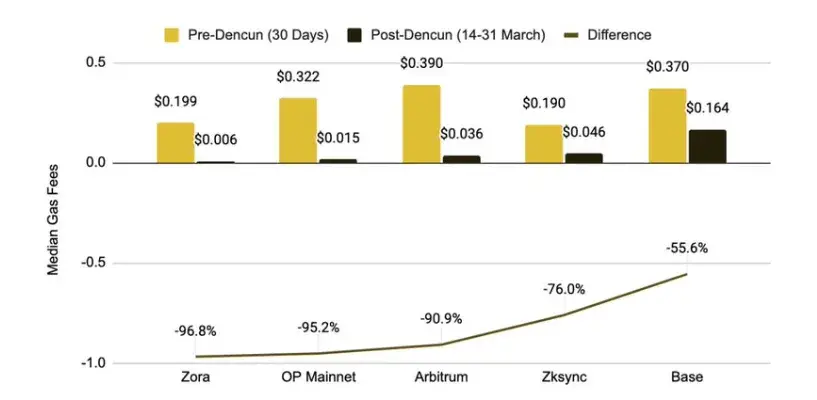
As L2 moves execution off-chain to reduce costs and maintain security, industry initiatives such as open-source frameworks and revenue-sharing models are shaping the "L2 Stack War" competition landscape.
The emergence of Rollups in the previous cycle aimed to significantly reduce on-chain operational costs by moving execution off the main chain while maintaining security from the main chain. While Op Rollup allows a single honest entity to submit "fraud proofs" and receive rewards for identifying misbehavior by sequencers, ZK Rollup uses zero-knowledge proofs to prove that the L2 chain has been updated correctly.
Rollups perform the following tasks:
- Sequencing: Organizing end-user transactions in order, grouping them, and occasionally batch-publishing these groups to L1
- Execution: Storing and executing operations and updating the state of Rollup
- Submission: Proposers regularly update the Rollup state root on L1, which is crucial for ensuring blockchain trustlessness and verifiability
- State root challenge: Submitting evidence of fraudulent state roots and challenging state roots on L1 (applicable only to Op Rollup)
- Proof: Generating verification of state root state updates from Rollup to L1 (applicable only to ZK Rollup)
They profit from user-paid transaction fees (sequencer revenue) and potential MEV (maximal extractable value), although MEV has not yet been extracted as part of their strategy. Their costs mainly come from L2 (operational costs) and L1 (data availability and settlement) costs. Organizations looking to launch their own chains typically only consider doing so when the expected transaction fees can exceed the costs of these initiatives.
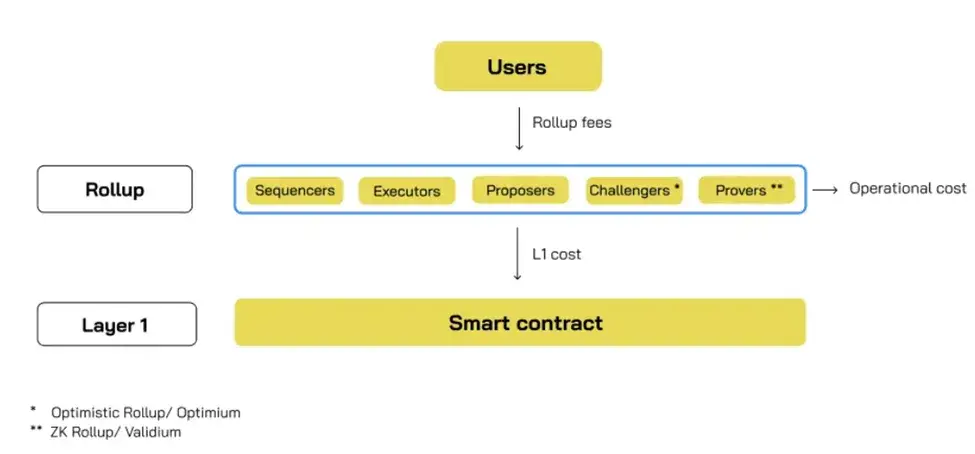
Base layer networks like Ethereum typically charge more for computation and storage as most nodes need to synchronize and verify the chain. However, in Rollups, even if only one honest entity can verify the chain, the chain is considered secure. Therefore, Rollups charge lower fees for computation and storage, but higher fees for rolling up transactions to be packaged and published to L1, resulting in L1 costs accounting for 98% of the L2 cost base before the introduction of EIP 4844.
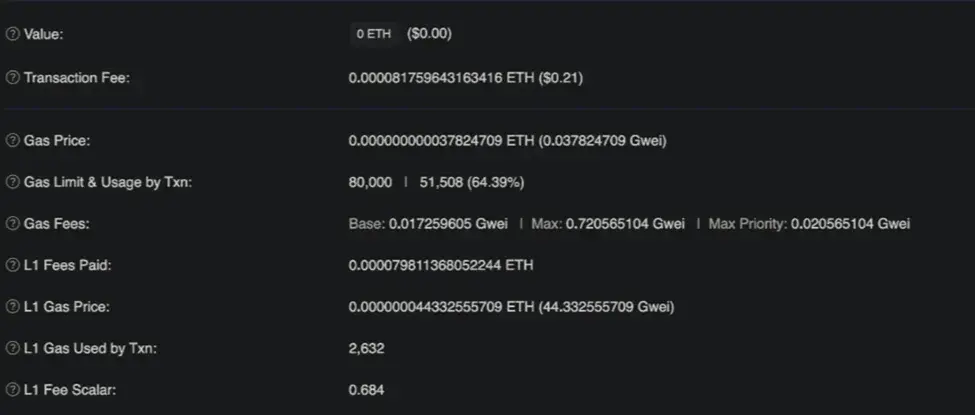
In addition to base layer optimizations, L2 is also vigorously promoting further cost reduction, which can be classified into two categories: industry alignment or company alignment.
Industry alignment initiatives include allowing new players to build their own chains through open-source L2 technology stacks (Rollup frameworks). This wave of initiatives was initially led by Op Rollup through the launch of OP Stack and Arbitrum Orbit, followed closely by other mature L2s such as Polygon (Polygon CDK), ZK Sync (ZK Stack), and Starkware (Madara Stack), which have open-sourced their proprietary technologies to drive large-scale applications.
The company alignment initiatives involve these chains reducing costs through direct revenue/profit-sharing models or indirectly through secondary effects of expanding their ecosystems and accumulating value for their tokens. Examples of such initiatives include Optimism's Superchain vision, Arbitrum's expansion plans, Polygon's aggregation layer, and ZK Sync's Elastic Chain. While the specifics of these projects may vary, the commonality is that they all exist within an interconnected network, providing enhanced interoperability, communication between multiple Rollups, and shared critical infrastructure such as shared data availability layers, shared cross-chain bridges, and aggregation proofs (applicable only to ZK chains), to further enhance capital efficiency—addressing the current issues of liquidity dispersion and interoperability between Rollups in the Ethereum ecosystem. However, these stacks also allow each chain to be uniquely customized based on its needs in terms of block time, withdrawal period, finality, token usage, gas limits, etc., eliminating the high gas costs and latency issues associated with running on public chains due to other applications.
While these independent ecosystems focus on growth and application, we have begun to see some mature players such as Optimism and Arbitrum gradually achieving monetization.
Optimism charges participants who wish to be part of its Superchain 2.5% of sequencer total revenue or 15% of sequencer profit (sequencer revenue - L1 settlement and data availability costs). Arbitrum charges participants using its stack to deploy L2 10% of sequencer profit, while ZK Rollup stacks including Polygon CDK, ZK Stack are currently free to use, but as they develop and gain traction, they may incorporate sustainable economic models.
As all ecosystems vie to attract important projects through unique strategies, the "L2 Stack War" has officially begun. Optimism has announced a $22 million bonus for Superchain builders, providing retroactive airdrops based on usage and participation metrics, while ZK Sync offers $22 million in ZK tokens to attract Lens to migrate from Polygon to its stack. Arbitrum, on the other hand, offers its stack for free, with the condition that participants publish as L3 on Arbitrum (using L2 as a settlement layer rather than Ethereum), as Arbitrum benefits from L3 activities, and these L3 chains will always pay settlement costs to Arbitrum throughout their lifecycle.
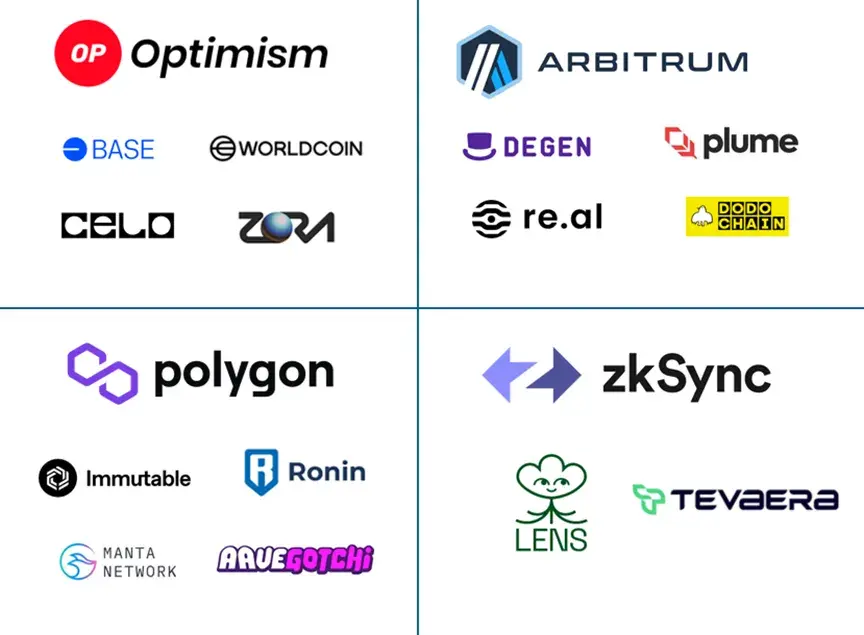
RaaS and alternative settlement and data availability solutions are redefining the cost structure of blockchain, and future modular infrastructure innovations are expected to further reduce costs.
Although these technology stacks are available, running a blockchain involves a significant amount of operational expenses, personnel, expertise, and resources. Developers looking to attract on-chain users do not want to be distracted by managing the operation and maintenance of chain infrastructure, but rather want to focus on core business activities.
This issue has led to the emergence of RaaS service providers, who collaborate with these developers to abstract the complexity of running chains using mature L2 frameworks/stacks. The services they provide include node operations, software updates, infrastructure management, and products such as sequencing, indexing, and analysis. RaaS service providers have adopted different market capture strategies, with some aligning with specific L2 ecosystems, while others take a more framework-agnostic approach, providing integration across all ecosystems. Conduit and Nexus Network integrate with Op Rollup stacks such as Optimism and Arbitrum, while Truezk, Karnot, and Slush focus on ZK chains. On the other hand, Caldera, Zeeve, Alt Layer, and Gelato provide integration across Op and ZK Rollups.
The typical business model of these service providers includes a fixed fee plus a share of sequencer profit. The monthly subscription fee for running Op Rollup generally ranges from $3,000 to $4,000, while the cost of running ZK Rollup may exceed twice that, reaching $9,500 to $14,000, due to the significant computational intensity required for generating ZK proofs and the high cost of proof verification. In addition, to align RaaS service providers with the incentive mechanisms of Rollups, a 3-5% share of sequencer profit is usually charged, allowing them to capture economic upside as these chains gain traction.
Caldera is exploring a different model, its Metalayer vision, which only charges a 2% share of sequencer profit, without fixed costs, aiming to achieve interoperability between chains using Caldera, whether Op or ZK series.
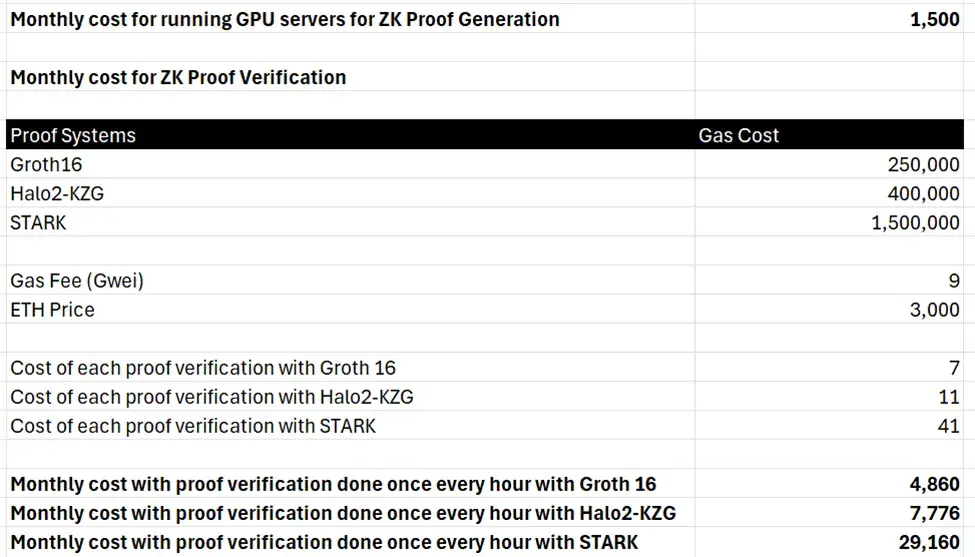
It is important to note that the industry's dynamics and the efforts of teams on these stacks, especially the ZK stacks, may further compress the subscription costs of RaaS service providers. Additionally, due to the scarcity of strong consumer-grade Web3 businesses, large-scale consumer-facing applications may be able to negotiate better economic sharing agreements with infrastructure service providers, so the initial pricing may not be standardized.
As mentioned earlier, the biggest expense of Rollups is the L1 cost, i.e., data availability and settlement costs. For a standard Rollup processing 100 million transactions, the L1 cost could be as high as $25,000 per month, making L1 settlement feasible only for the largest and most frequently used chains. The demand for alternative settlement and data availability solutions has prompted specialized players to optimize costs and performance at these layers. Ethereum's alternative data availability solutions include Celestia, Near, EigenDA, while mature L2s discussed earlier aim to serve as the settlement layer for Rollups, categorizing these chains as L3. Compared to Ethereum, these players have reduced the settlement and data availability costs for Rollups by an order of magnitude. The following figure provides a rough cost comparison, indicating the significant savings if Rollup publishes callData to Celestia instead of Ethereum. It is worth emphasizing that as transaction volume increases, the cost savings gap grows exponentially.
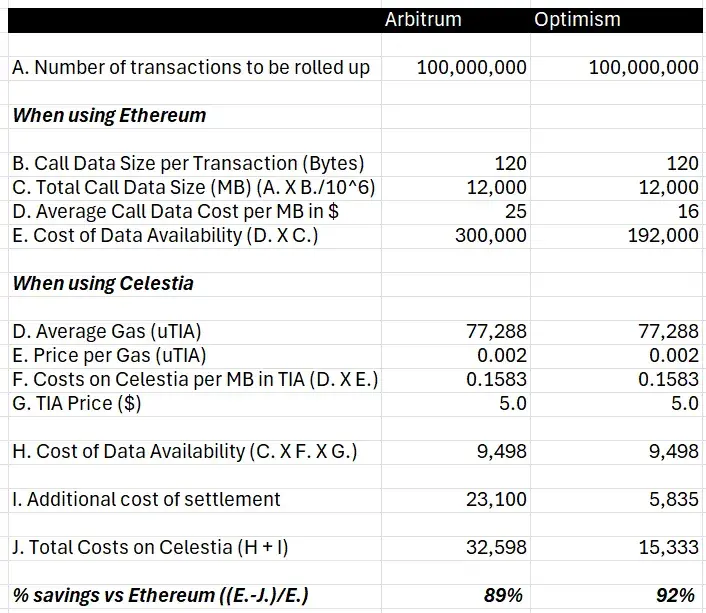
In addition to data availability costs, there are settlement costs, i.e., Celestia publishing markers on Ethereum pointing to relevant blocks on Celestia to ensure the sequencing and integrity of data published on Celestia.
The development of specialized players across modular infrastructure stacks, such as alternative data availability and RaaS service providers, can be collectively referred to as modular infrastructure behavior. There are other categories of innovation further optimizing costs, including shared sequencers (Espresso, Astria, Radius), proof aggregation (Nebra, Electron), and more. These are currently in the early stages of development, and we expect costs to further decrease as the industry matures.
Although the cost of on-chain operations has significantly decreased, Web2 founders should thoroughly analyze the cost-effectiveness before deciding to launch their own chain.
The total cost of running a chain depends on the specific usage requirements of each chain, but we can roughly estimate the cost of using alternative data availability solutions for an average Op or ZK chain processing 2 million transactions per month, as shown in the figure below.

Despite various optimizations at the industry and individual chain levels, a total of $10,500 to $16,500 per month is still required for ZK Rollup, and $4,000 to $6,500 for Op Rollup. Additionally, once the chain becomes profitable, up to 20% of sequencer profit will need to be shared.
The three major categories of initiatives highlighted in this article will be key drivers for industry-wide adoption, with the ultimate goal of narrowing the cost and convenience gap between decentralized applications and Web2. Builders should carefully evaluate the cost-effectiveness of running an independent chain versus building on existing chains based on their end-user requirements, product priorities, performance metrics required for application scenarios, and existing market attractiveness.
We find that building solutions to reduce the cost and performance differences between Web3 and Web2 infrastructure is necessary, as the societal preference for using decentralized systems is not enough to expand the application scope of Web3, and this challenge remains a key bottleneck in driving the mass adoption of blockchain.
免责声明:本文章仅代表作者个人观点,不代表本平台的立场和观点。本文章仅供信息分享,不构成对任何人的任何投资建议。用户与作者之间的任何争议,与本平台无关。如网页中刊载的文章或图片涉及侵权,请提供相关的权利证明和身份证明发送邮件到support@aicoin.com,本平台相关工作人员将会进行核查。




